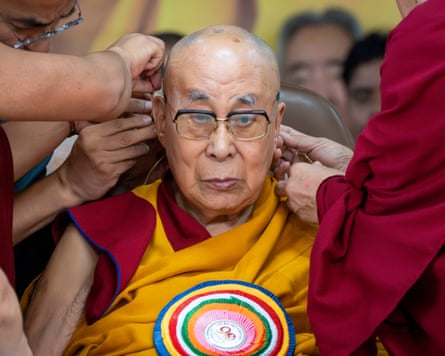Before long, Tibetan Buddhism will enter an unknown world – one without its current Dalai Lama. He has been the leader since he was chosen as a toddler more than 80 years ago. But the Dalai Lama is now 90, and talking openly about the process to pick his successor.
Much has changed, however, since he was discovered by senior Buddhist monks in a village in north-west Tibet in 1937. Most pertinently, the Chinese invasion of Tibet in the 1950s and the subsequent exile of the region’s Buddhist leadership to India in the decades since.
As our south Asia correspondent, Hannah Ellis-Petersen, explains, it means the identity of the next Lama – and the process of how to find them – has become a deeply disputed question, pitting the Chinese state against Buddhist monks. And raising the possibility, too, that after the death of the current Dalai Lama, the world may see not one Dalai Lama but two.
Lhadon Tethong of the Tibet Action Institute tells Lucy Hough what it has meant for Tibetans to live in exile for so long, and how they feel about Chinese attempts to interfere.


